Black History in Japan: Did You Know?
Ever since the American media played up derogatory remarks about Black Americans that made by Japan's Liberal Democratic Party politicians in the 1980s, some believe that Japanese who avoid contact with Blacks are racists.
It is time to bring to light long-ignored Japanese readings of African American history, literature, and struggle and investigate why the story of Japanese interactions with African Americans has been muted rather than celebrated via The African American Impact on Modern Japan.
 With all of the discussion on blackface in Japan, here is Iona Rozeal Brown's interpretation of Afro-Japan.
With all of the discussion on blackface in Japan, here is Iona Rozeal Brown's interpretation of Afro-Japan.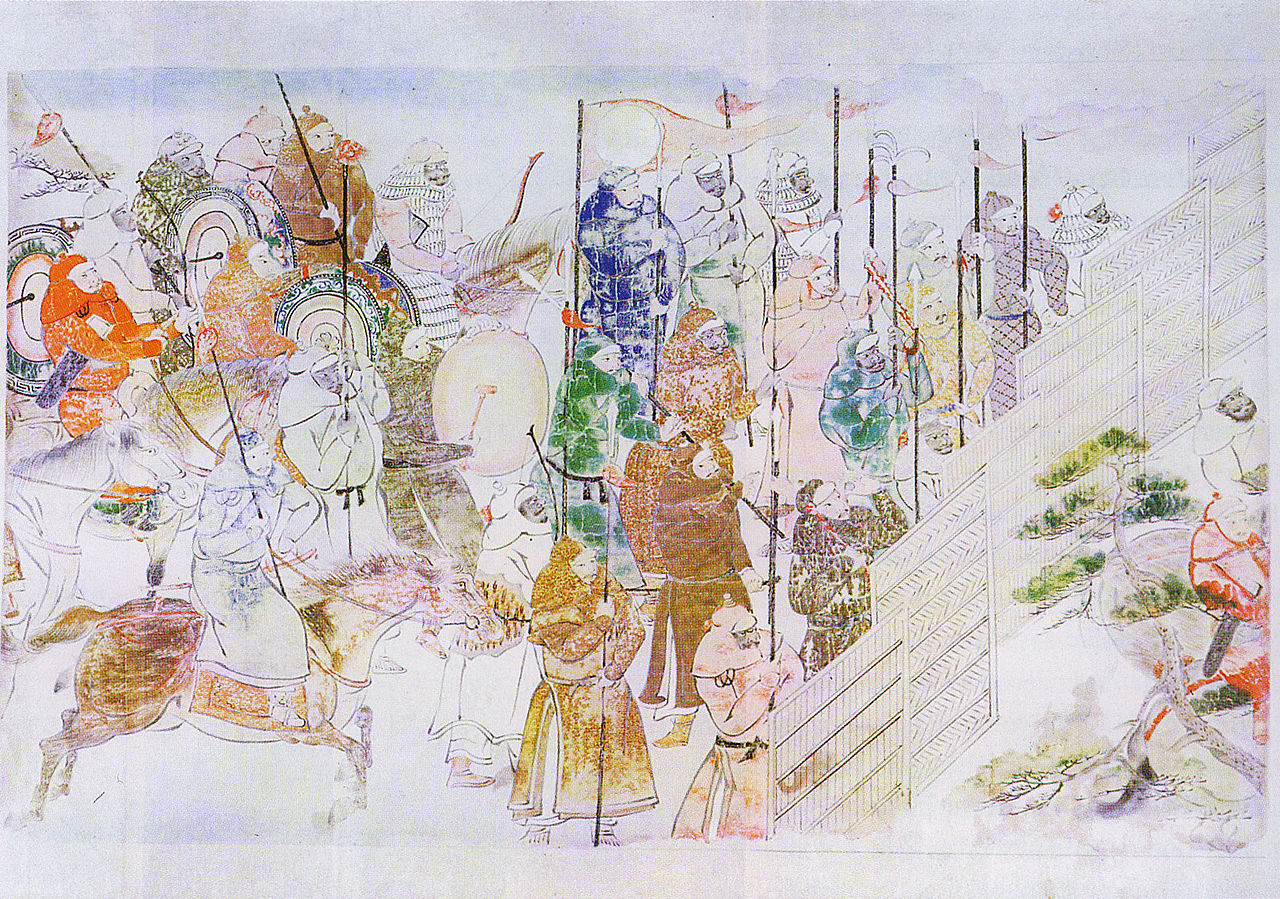 Did you know men of the African Diaspora are depicted in ancient Japanese and Chinese drawings and writings? Here is a hand scroll composed between 1275 and 1293 by Takezaki Suenaga to record battle valor during the Mongol invasion of Japan.
Did you know men of the African Diaspora are depicted in ancient Japanese and Chinese drawings and writings? Here is a hand scroll composed between 1275 and 1293 by Takezaki Suenaga to record battle valor during the Mongol invasion of Japan.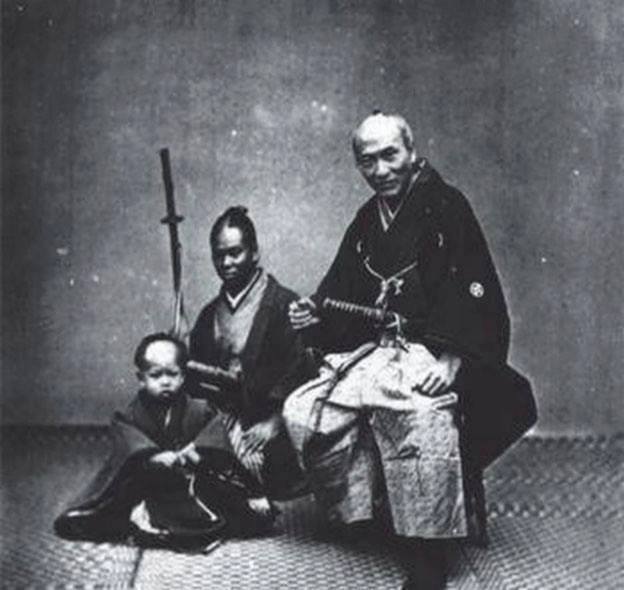 “And we can cross the whole of Asia and find the Negro again, for, when, in far-off Japan, the ancestors of the modern Japanese were making their way northward against the Ainu, the aborigines of that country, the leader of their armies was Sakanouye Tamuramaro, a famous general and a Negro” via The Journal of Race Development entitled The Contribution of the Negro to Human Civilization, Alexander Francis Chamberlain, The Journal of Race Development, Vol. 1, No. 4 (Apr., 1911), pp. 482-502
“And we can cross the whole of Asia and find the Negro again, for, when, in far-off Japan, the ancestors of the modern Japanese were making their way northward against the Ainu, the aborigines of that country, the leader of their armies was Sakanouye Tamuramaro, a famous general and a Negro” via The Journal of Race Development entitled The Contribution of the Negro to Human Civilization, Alexander Francis Chamberlain, The Journal of Race Development, Vol. 1, No. 4 (Apr., 1911), pp. 482-502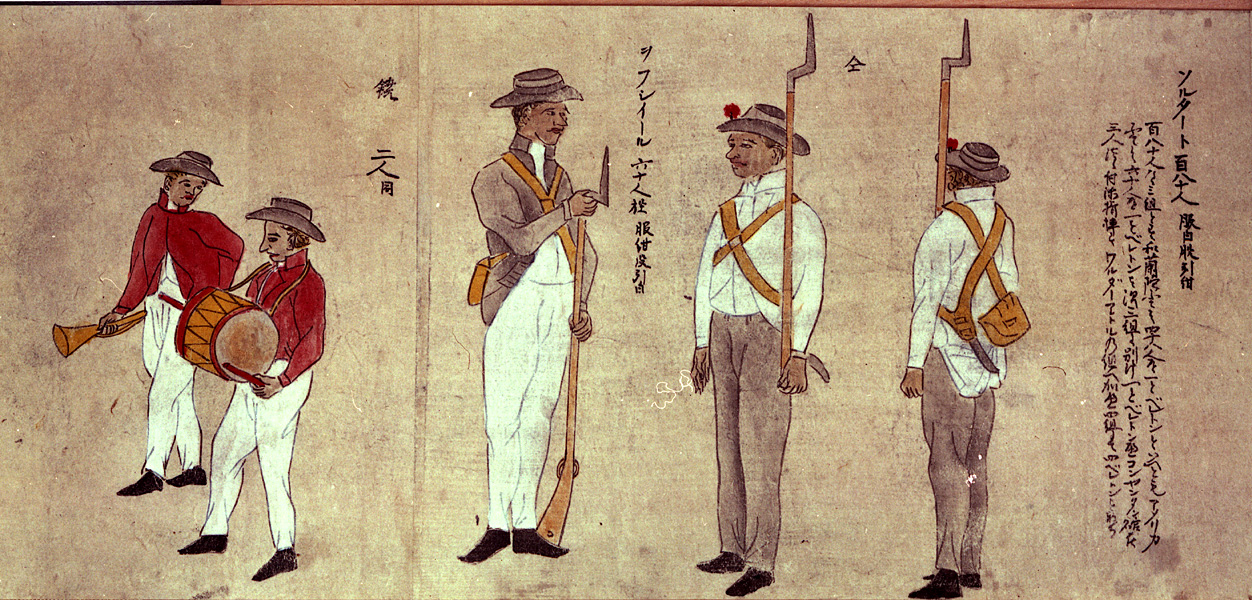 Did you know Commodore Perry introduced blackface to Japan? When it came to promoting human curiosities, however, Perry was not to be outdone. The American counterpart to the sumo wrestler was white men in black-face, as well as flesh-and-blood Negroes. At the time Perry was engaged in opening Japan to “civilization,” slavery was still widespread in the United States and minstrel shows were an enormously popular form of entertainment.
Did you know Commodore Perry introduced blackface to Japan? When it came to promoting human curiosities, however, Perry was not to be outdone. The American counterpart to the sumo wrestler was white men in black-face, as well as flesh-and-blood Negroes. At the time Perry was engaged in opening Japan to “civilization,” slavery was still widespread in the United States and minstrel shows were an enormously popular form of entertainment. In Japan (as well as elsewhere on the voyage to and from Japan), Perry’s favorite entertainment was an “Ethiopian concert” featuring white men playing the roles of “Colored ‘Gemmen’ of the North” and “Plantation ‘Niggas’ of the South,” and singing such songs as “Darkies Serenade” and “Oh! Mr. Coon.”
In Japan (as well as elsewhere on the voyage to and from Japan), Perry’s favorite entertainment was an “Ethiopian concert” featuring white men playing the roles of “Colored ‘Gemmen’ of the North” and “Plantation ‘Niggas’ of the South,” and singing such songs as “Darkies Serenade” and “Oh! Mr. Coon.”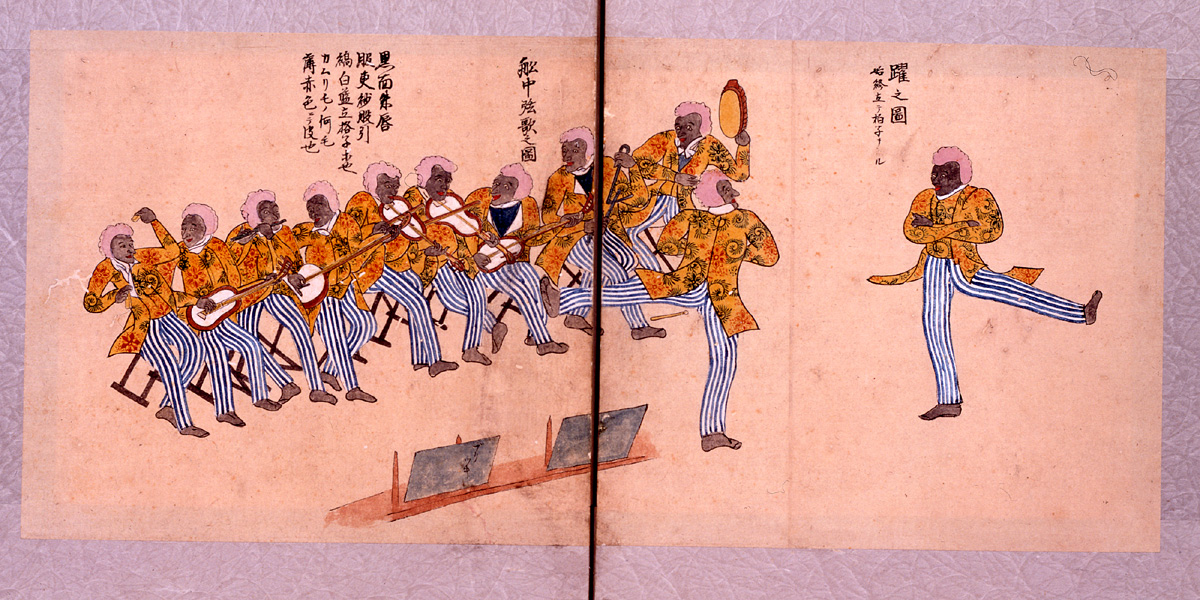 Although the Narrative dwells on the “delight to the natives” these performances gave, it remained for Japanese artists to preserve them for posterity.
Although the Narrative dwells on the “delight to the natives” these performances gave, it remained for Japanese artists to preserve them for posterity.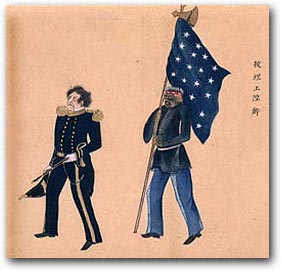 From the moment he first stepped on Japanese soil in 1853 to present the letter from President Fillmore, Perry also sought to impress the Japanese with authentic black men. “On either side of the Commodore,” the Narrative tells us, Perry, accompanied by a “tall, well-formed negro,” delivering President Fillmore’s letter, 1853 “marched a tall, well-formed negro, who, armed to the teeth, acted as his personal guard. These blacks, selected for the occasion, were two of the best-looking fellows of their color that the squadron could furnish.” Here again, it is the Japanese side that has left a graphic impression of these stalwart aides.
From the moment he first stepped on Japanese soil in 1853 to present the letter from President Fillmore, Perry also sought to impress the Japanese with authentic black men. “On either side of the Commodore,” the Narrative tells us, Perry, accompanied by a “tall, well-formed negro,” delivering President Fillmore’s letter, 1853 “marched a tall, well-formed negro, who, armed to the teeth, acted as his personal guard. These blacks, selected for the occasion, were two of the best-looking fellows of their color that the squadron could furnish.” Here again, it is the Japanese side that has left a graphic impression of these stalwart aides. The Japanese, whose prior contact with dark-skinned peoples was negligible, responded to these encounters with undisguised curiosity. As filtered through the eyes of popular artists, however, this interest emerges more as bemusement about the human species in general than any clear-cut prejudice toward foreigners, or toward blacks in particular.
The Japanese, whose prior contact with dark-skinned peoples was negligible, responded to these encounters with undisguised curiosity. As filtered through the eyes of popular artists, however, this interest emerges more as bemusement about the human species in general than any clear-cut prejudice toward foreigners, or toward blacks in particular. Did you know that some of the Japanese Americans forced into internment camps performed in blackface?”In a dark footnote to a dark chapter in US history, Japanese Americans interned by their own government during World War II performed in blackface behind barbed wire. Exploring blackface performance in the camps raises questions regarding the potential resistance of racial impersonation and blackface's potential for triangulating race.” via Blackface Behind Barbed Wire: Gender and Racial Triangulation in the Japanese American Internment Camps, Emily Roxworthy, Associate Professor of Theatre and Dance at the University of California, San Diego.
Did you know that some of the Japanese Americans forced into internment camps performed in blackface?”In a dark footnote to a dark chapter in US history, Japanese Americans interned by their own government during World War II performed in blackface behind barbed wire. Exploring blackface performance in the camps raises questions regarding the potential resistance of racial impersonation and blackface's potential for triangulating race.” via Blackface Behind Barbed Wire: Gender and Racial Triangulation in the Japanese American Internment Camps, Emily Roxworthy, Associate Professor of Theatre and Dance at the University of California, San Diego.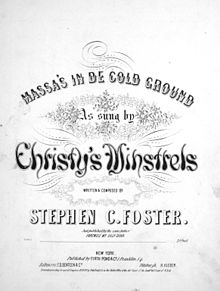 "Since the late nineteenth century, Stephen Foster's songs have been among the best-known American music in Japan for his simple, familiar tunes, which Japanese people associate with pastoral scenery or nostalgia for their native place or their childhood. Most Japanese students learn a number of Foster's songs in their music classes, from elementary through high school. In fact, many Japanese regard his music as part of their own cultural heritage. My first encounter with Foster's songs occurred in my middle school music class in the 1960s. I still remember singing songs such as "Oh, Susanna," "Old Folks at Home," "Old Black Joe," "Jeanie with the Light Brown Hair," and "My Old Kentucky Home." I was also interested in their English lyrics, for it was at the time when Japanese children start to "Massa's in de Cold Ground" "My Old Kentucky Home" "Old Folks at Home" learn English. In high school, I found the lyrics of "Beautiful Dreamer" too difficult to understand. Later as a graduate student in the 1980s, I took the course "History of American Music" taught by Dr. William J. Mahar at Pennsylvania State University in Harrisburg. That is where I first learned of the relationship between Stephen Foster and blackface minstrelsy, for which he had written his dialectal songs or plantation melodies." via Professor Kazuko Miyashita, Foster’s Songs in Japan, American Music, Vol. 30, No. 3 (Fall 2012), pp. 308-325Published by: University of Illinois Press.
"Since the late nineteenth century, Stephen Foster's songs have been among the best-known American music in Japan for his simple, familiar tunes, which Japanese people associate with pastoral scenery or nostalgia for their native place or their childhood. Most Japanese students learn a number of Foster's songs in their music classes, from elementary through high school. In fact, many Japanese regard his music as part of their own cultural heritage. My first encounter with Foster's songs occurred in my middle school music class in the 1960s. I still remember singing songs such as "Oh, Susanna," "Old Folks at Home," "Old Black Joe," "Jeanie with the Light Brown Hair," and "My Old Kentucky Home." I was also interested in their English lyrics, for it was at the time when Japanese children start to "Massa's in de Cold Ground" "My Old Kentucky Home" "Old Folks at Home" learn English. In high school, I found the lyrics of "Beautiful Dreamer" too difficult to understand. Later as a graduate student in the 1980s, I took the course "History of American Music" taught by Dr. William J. Mahar at Pennsylvania State University in Harrisburg. That is where I first learned of the relationship between Stephen Foster and blackface minstrelsy, for which he had written his dialectal songs or plantation melodies." via Professor Kazuko Miyashita, Foster’s Songs in Japan, American Music, Vol. 30, No. 3 (Fall 2012), pp. 308-325Published by: University of Illinois Press. Did you know Pyrrus Concer, an indentured servant who came to Japan before Commodore Perry? Few people realize the extent to which Japanese people have interacted with and been influenced by Africans and African Americans and their history."On March 29, 1799, the New York State Legislature approved the Gradual Abolition Act, which stated that any child born to a enslaved woman after July 4 of that year would be free. Mr. Concer was born to Violet Williams, who was a slave owned by Nathan Cooper of Southampton, on March 17, 1814—which made him, by law, an indentured servant to Mr. Cooper, rather than a slave."Although Japanese high school students today at least read excerpts from original works by Booker T. Washington, Langston Hughes, Richard Wright, Martin Luther King Jr., and Marian Anderson in Ministry of Education–approved English textbooks. Yet no Japanese history book pays homage to those African Americans who have played a substantial role in U.S.-Japanese relations since their earliest phase.At the time, Yedo, or Tokyo, was a forbidden port where sailors were unable to venture in 1848. Foreigners were not allowed to enter Japan. After helping to save Japanese shipwrecked sailors and returning them to port, however, Mr. Concer was the first black American man to trade with the Japanese, who were mesmerized. “One after another tried to rub off the black of his skin, stare at his marvelous perfect white teeth and listen to him speak,” Mr. Davis wrote.Stepping onto Japanese soil was a historic act —Mr. Concer was the first Black American man ever to enter Japan, according to an obituary published in The Southampton Press in 1897. “Pyrrhus is famous in Japanese history because he’s a black person they traded with,” Mr. Ware said. In the 1970s, Japanese officials even traveled to Southampton to trace his history and dedicate a memorial in his name.
Did you know Pyrrus Concer, an indentured servant who came to Japan before Commodore Perry? Few people realize the extent to which Japanese people have interacted with and been influenced by Africans and African Americans and their history."On March 29, 1799, the New York State Legislature approved the Gradual Abolition Act, which stated that any child born to a enslaved woman after July 4 of that year would be free. Mr. Concer was born to Violet Williams, who was a slave owned by Nathan Cooper of Southampton, on March 17, 1814—which made him, by law, an indentured servant to Mr. Cooper, rather than a slave."Although Japanese high school students today at least read excerpts from original works by Booker T. Washington, Langston Hughes, Richard Wright, Martin Luther King Jr., and Marian Anderson in Ministry of Education–approved English textbooks. Yet no Japanese history book pays homage to those African Americans who have played a substantial role in U.S.-Japanese relations since their earliest phase.At the time, Yedo, or Tokyo, was a forbidden port where sailors were unable to venture in 1848. Foreigners were not allowed to enter Japan. After helping to save Japanese shipwrecked sailors and returning them to port, however, Mr. Concer was the first black American man to trade with the Japanese, who were mesmerized. “One after another tried to rub off the black of his skin, stare at his marvelous perfect white teeth and listen to him speak,” Mr. Davis wrote.Stepping onto Japanese soil was a historic act —Mr. Concer was the first Black American man ever to enter Japan, according to an obituary published in The Southampton Press in 1897. “Pyrrhus is famous in Japanese history because he’s a black person they traded with,” Mr. Ware said. In the 1970s, Japanese officials even traveled to Southampton to trace his history and dedicate a memorial in his name.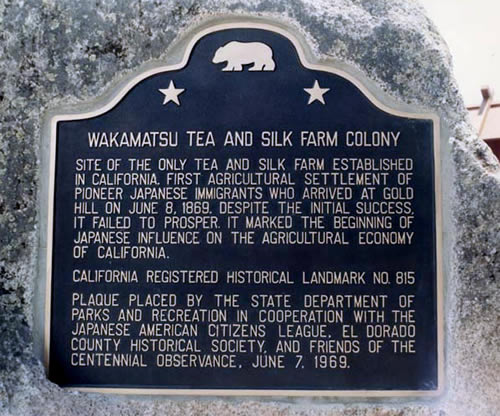 Carrie Wilson married Masumizu Kuninosuke, an early Japanese settler in the famed Wakamatsu Colony in Sacramento, California. She was the daughter of a former slave from Missouri and a Blackfoot Indian woman. Carrie and her husband together with whom she heralded a history of Japanese immigrants of African American heritage. Did you know their grandchildren, known as the only descendants of the first Mainland Japanese American settlement, consider themselves as African American?
Carrie Wilson married Masumizu Kuninosuke, an early Japanese settler in the famed Wakamatsu Colony in Sacramento, California. She was the daughter of a former slave from Missouri and a Blackfoot Indian woman. Carrie and her husband together with whom she heralded a history of Japanese immigrants of African American heritage. Did you know their grandchildren, known as the only descendants of the first Mainland Japanese American settlement, consider themselves as African American?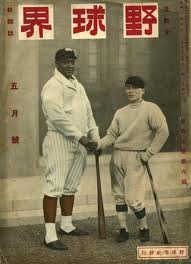 Did you know that the Philadelphia Royal Giants of the Negro League visited Japan in 1927, four years earlier than the (all-white) All Star American Major League baseball team?
Did you know that the Philadelphia Royal Giants of the Negro League visited Japan in 1927, four years earlier than the (all-white) All Star American Major League baseball team?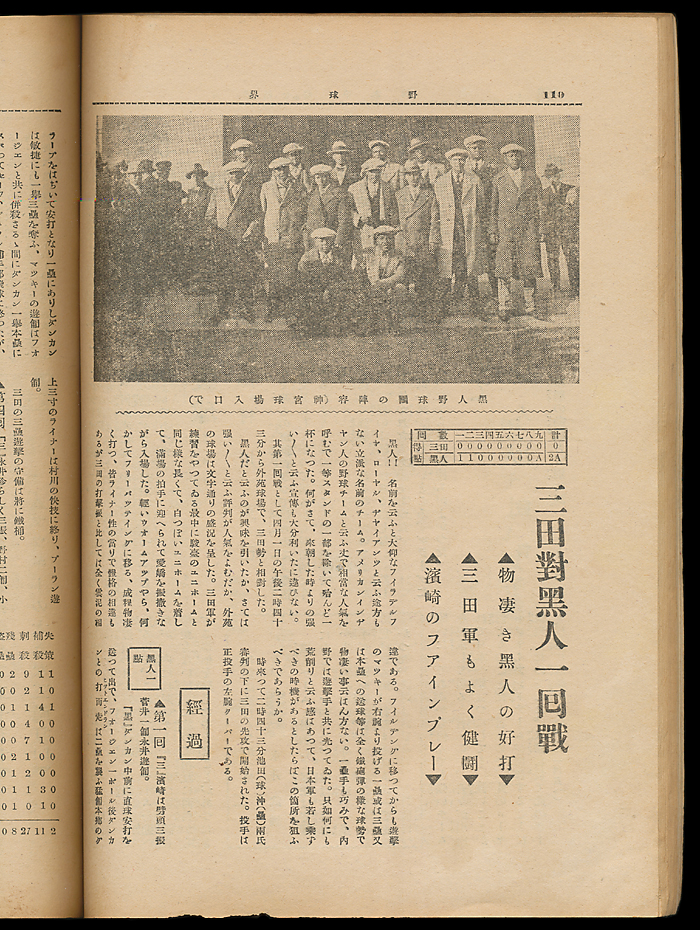 "Baseball Hall of Famer and Negro League legend Biz Mackey and others played in Japan, Korea and Hawaii on the tour, compiling a 35-2-1 record. Even in modern times, Japan is a whole other world for Westerners, but for the black players on the 1927 tour, it was just so, in a completely different way.
"Baseball Hall of Famer and Negro League legend Biz Mackey and others played in Japan, Korea and Hawaii on the tour, compiling a 35-2-1 record. Even in modern times, Japan is a whole other world for Westerners, but for the black players on the 1927 tour, it was just so, in a completely different way.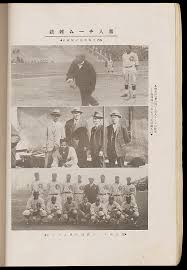 The tour, put together by Japanese-American baseball pioneer Kenichi Zenimura, featured the Los Angeles-based Philadelphia Royal Giants, as well as Zenimura's own Fresno Athletic Club team. The teams toured Japan in the second of three such circuits."Regarding treatment of Mackey and his teammates, however, Japan was way ahead of its time. Still living in the world of the Negro Leagues and a segregated America, the Royal Giants were treated like, well, royalty. Or sometimes, by royalty. The emperor of Japan presented a cup to Negro Leaguer and Royal Giant Rap Dixon, quite a step up from life in a country where blacks were treated as second-class citizens.
The tour, put together by Japanese-American baseball pioneer Kenichi Zenimura, featured the Los Angeles-based Philadelphia Royal Giants, as well as Zenimura's own Fresno Athletic Club team. The teams toured Japan in the second of three such circuits."Regarding treatment of Mackey and his teammates, however, Japan was way ahead of its time. Still living in the world of the Negro Leagues and a segregated America, the Royal Giants were treated like, well, royalty. Or sometimes, by royalty. The emperor of Japan presented a cup to Negro Leaguer and Royal Giant Rap Dixon, quite a step up from life in a country where blacks were treated as second-class citizens. "When they got over to Japan and Tokyo, they felt a sense of freedom," said Ray Mackey, the grand-nephew of Biz Mackey. "The Japanese people met them more or less with open arms and subsequently caused them to respond in a like manner."This notion of camaraderie through baseball, an early bond of the sport's modern multiculturalism, is what Sayama's book "Gentle, Black Giants" says helped plant the seeds of pro ball in Japan.Unlike tours in the 1930s with the big-name Major Leaguers, the Negro League players didn't mock their opponents with hot-dog plays, for example. According to Sayama's book, published in Japanese and still the only book written about the Goodwill Tour of '27, this respect was important to the Japanese players, as was the willingness of players such as Mackey and Frank Duncan to try to teach their gracious hosts about baseball.As always, there is more to the stories. I welcome your comments below![ad]
"When they got over to Japan and Tokyo, they felt a sense of freedom," said Ray Mackey, the grand-nephew of Biz Mackey. "The Japanese people met them more or less with open arms and subsequently caused them to respond in a like manner."This notion of camaraderie through baseball, an early bond of the sport's modern multiculturalism, is what Sayama's book "Gentle, Black Giants" says helped plant the seeds of pro ball in Japan.Unlike tours in the 1930s with the big-name Major Leaguers, the Negro League players didn't mock their opponents with hot-dog plays, for example. According to Sayama's book, published in Japanese and still the only book written about the Goodwill Tour of '27, this respect was important to the Japanese players, as was the willingness of players such as Mackey and Frank Duncan to try to teach their gracious hosts about baseball.As always, there is more to the stories. I welcome your comments below![ad]
